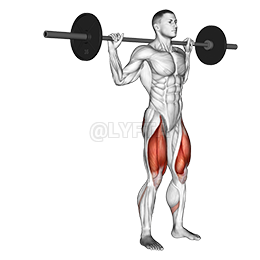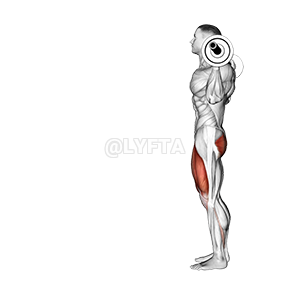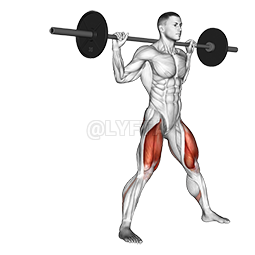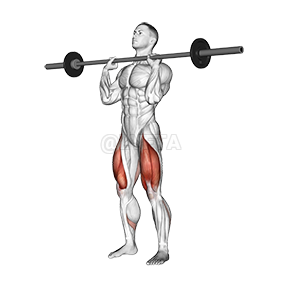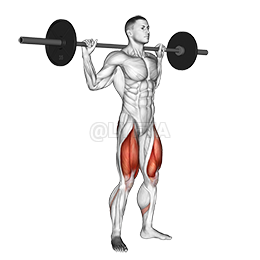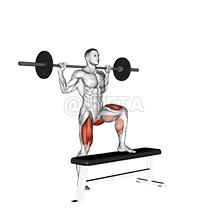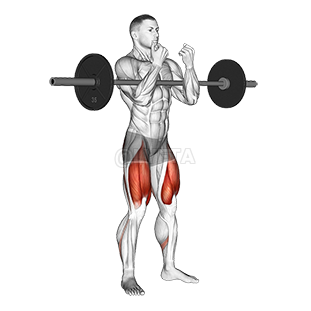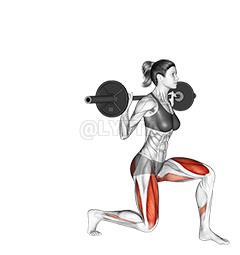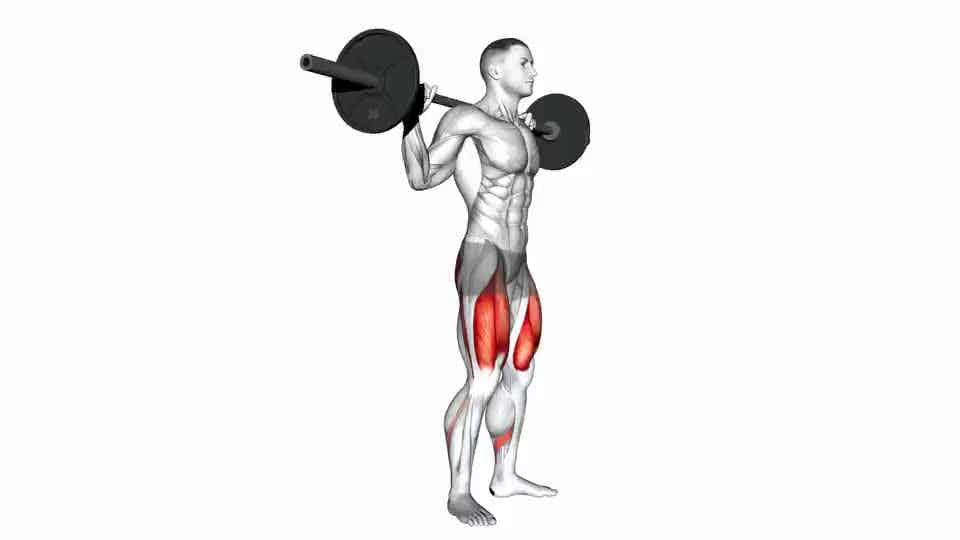
Barbell Full Squat
Exercise Profile
Related Exercises:
Introduction to the Barbell Full Squat
The Barbell Full Squat is a comprehensive strength training exercise that primarily targets the lower body muscles, including the quadriceps, hamstrings, and glutes, while also engaging your core and improving balance. It is suitable for individuals at all fitness levels, from beginners to advanced athletes, due to its customizable weight load and adaptability. People would want to perform this exercise to enhance their lower body strength, improve functional mobility, and boost overall athletic performance.
Performing the: A Step-by-Step Tutorial Barbell Full Squat
- Step back from the rack and place your feet shoulder-width apart, toes slightly pointed outwards; this will be your starting position.
- Begin the movement by flexing your knees and hips, sitting back with your hips while keeping your chest up and your back straight.
- Continue down as far as flexibility allows, ideally until your thighs are parallel to the floor, then push through your heels to reverse the motion and return to the starting position.
- Repeat the exercise for the desired amount of repetitions, ensuring to maintain form and control throughout each movement.
Tips for Performing Barbell Full Squat
- **Foot Placement:** Your feet should be shoulder-width apart or slightly wider, with your toes pointing slightly outwards. This stance provides a solid base for the squat and helps to engage the correct muscle groups. A common mistake is placing the feet too close together or too far apart, which can lead to instability and injury.
- **Maintain Neutral Spine:** It's crucial to keep your spine in a neutral position throughout the entire movement. This means not rounding your back or over-arching it. A common mistake is allowing the lower back to round, which can lead to serious injury. Engage your core muscles to help maintain this position.
Barbell Full Squat FAQs
Can beginners do the Barbell Full Squat?
Yes, beginners can do the Barbell Full Squat exercise. However, it's important to start with a weight that is comfortable and manageable in order to perfect the form and avoid injury. It may also be beneficial to have a personal trainer or experienced gym-goer supervise the first few sessions to ensure the technique is correct. As strength and confidence increase, the weight can be gradually increased.
What are common variations of the Barbell Full Squat?
- Box Squat: In this variation, you squat down until your buttocks touch a box or bench behind you, helping to ensure proper form and depth.
- Overhead Squat: This challenging variation involves holding the barbell above your head for the entire movement, which requires significant shoulder mobility and stability.
- Zercher Squat: For this squat, you hold the barbell in the crook of your elbows, which can help to improve your posture and engage your core.
- Goblet Squat: While typically performed with a kettlebell or dumbbell, this squat can also be done with a barbell held vertically against your chest, which can help to improve your form and balance.
What are good complementing exercises for the Barbell Full Squat?
- Leg Presses can also complement Barbell Full Squats as they focus on the same primary muscles but allow you to lift heavier weights in a controlled environment, further enhancing muscle growth and strength.
- Deadlifts are another excellent complementary exercise to Barbell Full Squats, as they target not only the lower body but also the lower back and core, promoting a strong, stable base for improved squat performance.
Related keywords for Barbell Full Squat
- Barbell Squat workout
- Quadriceps strengthening exercises
- Thigh toning with barbell
- Full Squat routines
- Barbell exercises for thighs
- Strength training for quadriceps
- Barbell Full Squat technique
- Lower body workout with barbell
- Barbell Squat for leg muscles
- Intense thigh workout with barbell

